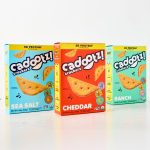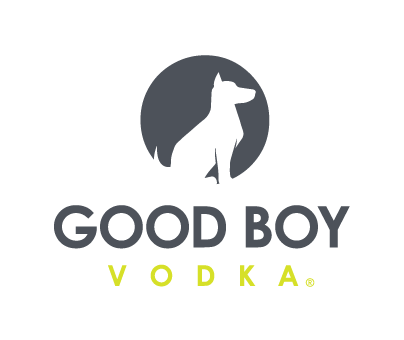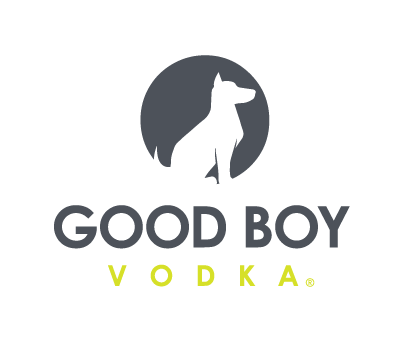Grocery Shopping Habits: Food and Beverage Choices Foretell the Future, So Read the Carts

So who are the most powerful groups, and what are their grocery shopping habits?
The Baby Boomer Influence
For now, the 77-million-strong Baby Boomer (born 1946-1964) generation is still a force to be reckoned with as the largest generation to ever live,
according to CNN. They changed the course of the country in every arena, not the least of which has been food. While their parents’ foods tended to be bland, Boomers got more flavor with sugars, sweets, and fats—which also made foods unhealthier. They ate more, too. According to a study by the U.S. Department of Agriculture, the average daily calorie intake per person in the United States increased by 24.5 percent between 1970 and 2000, more than half of that from added fats, oils and sugar.
But as Boomers have aged, they have become more informed and focused on nutrition. According to a study by Centers for Disease Control, 68 percent say they now try to eat healthier foods or products aimed to improve energy, digestive issues and heart health. But they are fairly brand loyal and respond to products and retailers that address the “what’s in it for me question?” notes a recent report from Acosta Sales & Marketing.
So Boomer carts that were once filled with frozen meals and junk food are now bursting with healthier options, often with lower fats and sugars, higher fiber and more natural ingredients. Boomers also read packages to determine the aforementioned.
Now empty nesters, they also buy smaller portions, which speaks to the need for right-sized and resealable multi-serve beverage packaging. A good example can be found in the dairy aisle, where gallon jugs of plain white milk just don’t fit the bill anymore. More forward-thinking processors have begun offering half-gallon and smaller sizes formulated for this population’s specific nutritional needs.
Generation X Passes Through
Generation X followed the Baby Boomers in birth order, and they have their own distinct preferences and grocery shopping habits. According to a University of Michigan study, Gen X men cook and grocery shop more than men from earlier generations. Gen Xers invite guests over for dinner more frequently and about half say they prefer to buy organic at least some of the time. They also use information to guide their decisions, notes the report from Acosta Sales & Marketing.
Gen X’s shopping carts also likely contain an extra bottle of wine and large bulk sizes for entertaining and their families. They also spend more money on groceries on average than any other generation, notes the Acosta report, although they lack significant grocery shopping influence. At around 40 million strong, their population—and spending power—pales compared with that of Baby Boomers.
But the Millennials, those born between 1980 and 1996, are a different story.
The Changing Of the Guard
By some estimates, more than 80 million Americans are Millennials. That’s 7 percent more people than those who fall into the Baby Boomer generation.
Millennials (aka Generation Y) and the generation that follows, Generation Z, are changing grocery shopping habits, and altering them so significantly that food and beverage companies must adapt now if they want to thrive and survive.
What Makes Millennials Tick
Knowing what moves Millennials is key to understanding how and why they buy. They’re prone to channel surfing, texting and social network hopping, according to a study published by the Pew Research Center. It also notes they “treat their multitasking, handheld gadgets almost like a body part,” and 75 percent have created a profile on a social networking site.
They are connected 24 hours a day and that influences everything they do, including their grocery shopping.
For one, they insist on authenticity. Millennials expect their brands to be transparent, which includes open lines of communication. Many Millennials were reared on diverse, ethnic cuisine. So they want the food they buy to look, feel and taste like the real thing. According to the Center for Culinary Development, they also have a soft spot for ethnic mash-ups as long as the result is “authentic and delicious.”
Millennials are also socially conscious. They believe what they buy helps define them: They literally are what they eat. They are attracted to buzz words like organic, free range, locally grown and grass-fed. This awareness extends to packaging. Research shows Millennials are attracted to cartons, which are sustainably sourced, lightweight and recyclable, and also sleek, modern and the perfect canvas for vibrant, eye-catching graphics.
According to a study by advertising agency BBDO, “Millennials have a fascination with food as a way to tell their story. For them, food is not just about nourishment. It’s about self-expression and entertainment. It’s about personal storytelling.” For example, they might Instagram what they’ve made for dinner and watch cooking shows as well as follow the same chefs on Twitter.
Price plays a crucial role with all demographics. But the economic recession has hit Millennials particularly hard. According to a study by Archpoint Consulting, more than 60 percent of Millennial shoppers say they don’t focus on brands but on price (46 percent of Baby Boomers say the same). For that reason, they are attracted to private label brands: 42 percent buy store brands to save money.
Millennials are health savvy, too. According to the Archpoint Consulting study, more than half of the Millennials polled ranked the purchase of fresh fruit and vegetables extremely or somewhat important compared with 45 percent of Baby Boomers.
Peek into a Millennial’s shopping cart and you’ll find it filled with authentic, sustainable and price-sensitive options such as farm-raised eggs, organic chicken broth in resealable Tetra Pak cartons, kimchi from the ethnic aisle and store-brand whole wheat bread.
Generation Z: Change Is Here To Stay
Generation Z (today’s tweens and teens) shares many Millennial attitudes and behaviors. They have grown up in the Great Recession and a post 9/11 world. They’ve seen their parents struggle with employment. As a result, they are even more focused on price and saving money. And of course, they are still on limited budgets.
Marketing Week’s description of Generation Z is telling: “They are predominantly time rich, cash poor.” Because they are always connected, they are constantly searching for opinions, reviews and reasons to support, or remove their support, for a brand and the best price possible. And they tend to document their picks on Pinterest.
As the influence of Millennials and Generation Z expand, the food found in grocery aisles will continue to change, such as with packaging that is sustainable in every sense of the word and reflects the healthier contents inside—with appealing graphics and thorough nutritional information. These foods will offer socially conscious shoppers the information they need, while protecting its contents.
Social media will keep influencing grocery shopping habits as well, with transparency and community continuing to increase in importance. Those companies that engage their audiences in authentic, open conversation will reap the benefits. But brands that fail to become members of the social community risk being left out of the shopping carts of the future.
















